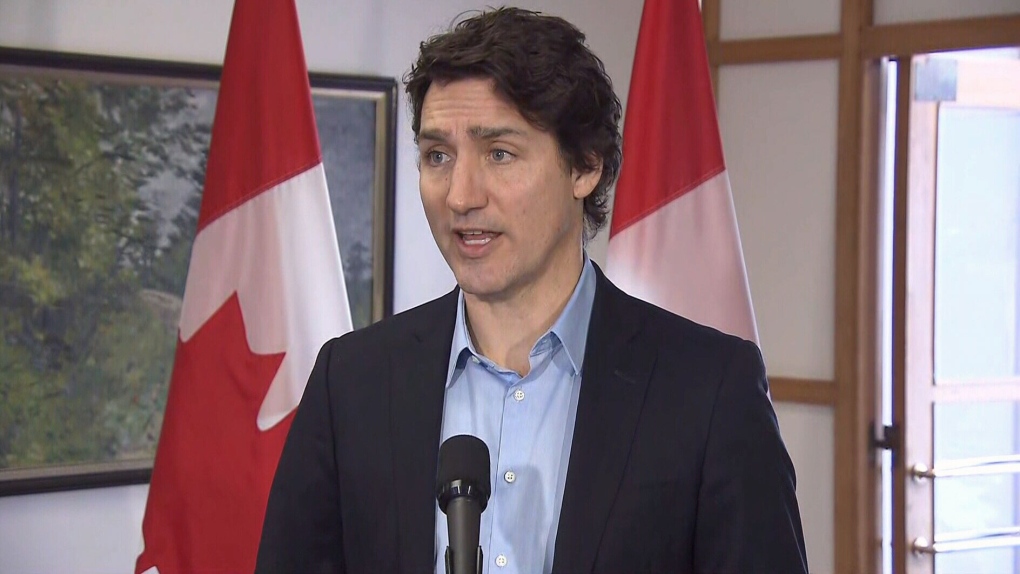
The U.S. military shot down a fourth high-altitude object in just over a week on Sunday, this time closer to heavily populated areas in southern Ontario and the U.S. East Coast.
Canadian Defence Minister Anita Anand said in a statement Sunday evening that a “high-altitude object” was detected in U.S. airspace over Lake Huron.
“NORAD launched Canadian and U.S. aircraft to investigate and the object was taken down in U.S. airspace by U.S. aircraft,” Anand said.
The move marks the most recent incident in which U.S. fighter jets shot an object out of the sky, starting with a suspected Chinese surveillance balloon off the coast of South Carolina on Feb. 4.
Unidentified cylindrical objects were shot down over Alaska and Yukon Friday and Saturday.
The North American Aerospace Defence Command, the joint U.S.-Canadian air surveillance and defence organization, said in a statement it had closed airspace over Lake Michigan temporarily around noon Sunday to protect civilian planes during unspecified NORAD “operations.” They did not explain further. Nor have they offered reasons why the airspace was closed over Lake Michigan when the object was spotted over Lake Huron.
Earlier Sunday, Prime Minister Justin Trudeau said Canada and the U.S. were co-operating and in constant communication about the situation.
“You can know that this is something that NORAD and Canada and the United States are taking extremely seriously, and we will continue to keep people informed as we know more,” he said.
Canadian military and RCMP recovery teams, aided by a CP-160 aircraft, were searching the Yukon wilderness for the remnants of the object shot down Saturday over the central part of the territory, about 160 km from the Alaskan border.
Trudeau said the object needs to be found and analyzed.
“There’s still much to know about it,” he said. “That’s why the analysis of this object is going to be very important.”
The prime minister spoke to reporters briefly at the airport before boarding a plane bound for Yukon on a trip that was planned before Saturday’s incident but will now include meetings with local government and Indigenous leaders about what happened.
But there is little yet reported publicly about what the objects are.
Defence Minister Anita Anand said Saturday the Yukon object was “potentially similar” to the Chinese spy balloon destroyed Feb. 4. U.S. Senate Majority Leader Chuck Schumer told ABC’s Sunday morning news show that U.S. national security officials believe both the Yukon and Alaskan objects were small surveillance balloons.
The undercarriage of the first balloon, which contains the surveillance equipment, was located mostly intact in the water on Friday, but efforts to extract it were delayed until at least Monday because of rough seas.
That first balloon was described as being about the size of three school buses and weighing about 450 kg.
The second object that was shot down over Alaska Friday was said to be about the size of a small car. It has not yet been recovered.
Beyond Anand’s comments, no size estimate has yet been provided on the third one shot down over Yukon.
Canadian and U.S. authorities have had little to say about the objects or their intended purpose beyond surveillance. Only the first one has been confirmed to have originated in China.
China has insisted it was a meteorological surveillance balloon that accidentally drifted off course and into the U.S.
American officials said over the course of less than a week the object travelled from China, across Alaska, through parts of Canada into Montana and then across the continental U.S. until it was shot down off the coast of South Carolina near Myrtle Beach.
James Fergusson, deputy director for the Centre for Defence and Security Studies at the University of Manitoba, said in an interview with The Canadian Press that right now any information about what the objects are doing is pure speculation.
“We’re all in the dark right now,” he said.
Fergusson speculated whoever is sending the objects is trying to find out how accurate we are in identifying objects flying into North American airspace, and what we’ll do about them.
“If it is a test of NORAD capabilities, then the tests have failed. We’ve made it very clear … that you cannot penetrate North American airspace without repercussions.”
Yukon Premier Ranj Pillai said Saturday the territory had been in contact with the federal government and had already been in talks with federal officials “to discuss Arctic security” over the previous week.
He will meet with Trudeau in Whitehorse Monday.
In a statement issued Sunday, Yukon’s opposition leader Currie Dixon said the incident “reaffirms the need to modernize our North Warning System, as well as for a fully built-out Canadian Armed Forces base in the Yukon.”
The North Warning System, a chain of radar stations operating under the North American Aerospace Defence Command, gives Canada and the United States the ability to monitor who or what enters Canadian or Alaskan airspace from the north. It is growing outdated, however, and updating it is part of a NORAD modernization effort that is already underway.
The initial balloon was flying at about 18,000 metres, which is higher than most civilian aircraft. U.S. President Joe Biden ordered it shot down on Feb. 1, but the military waited until it was not over a populated area before taking it out.
The second and third were spotted at altitudes of about 12,000 metres, which is at the top end of the normal cruising height for most commercial airplanes.
Trudeau said at that height, the object over Yukon “represented a reasonable threat to civilian aircraft, so I gave the order to take it down.”
